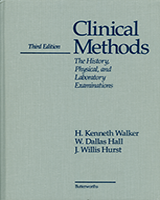From: Chapter 214, Allergic Drug Reactions

NCBI Bookshelf. A service of the National Library of Medicine, National Institutes of Health.
| Cell bound antigen | "Free" antigen | No antigen | |
|---|---|---|---|
| Cell bound antibody | ADCC and Type V | Type I | — |
| Free antibody | Type II | Type III | — |
| T cell mediated | Type IV | Type IV | — |
| No antibody | — | — | Immunelike |
ADCC = Antibody dependent cell cytotoxicity where antibody attachment to the target cells is followed by killing of the cells by lymphocytes, macrophages, or polymorphonuclear cells.
Type V reaction = Cell stimulation by antibody, e.g., thyroxine release by IgG long acting thyroid stimulator (LATS).
Type I = Mast cell degranulation by IgE in the presence of antigen.
Type II = Antibody attachment to drug hapten on cell surface. The cell is then removed by the spleen or lysed via the participation of complement.
Type III = Formation of antigen-antibody complexes which fix complement, these complexes then damage "innocent bystander" cells, e.g., red blood cells or vascular endothelial cells.
Type IV = T cell mediated via lymphokine release, e.g., PPD skin reaction or contact dermatitis.
Immunelike = immunologic amplification not initiated by specific antigen (as defined by specific immunological memory) but by nonspecific chemical means, e.g., mast cell degranulation by radiopaque dyes or lymphokine release stimulated by lectins in plants and foods.
From: Chapter 214, Allergic Drug Reactions

NCBI Bookshelf. A service of the National Library of Medicine, National Institutes of Health.